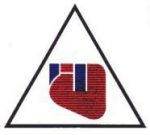J Hypertens. 2018 Feb;36(2):395-401. doi: 10.1097/HJH.0000000000001560.
Abstract
OBJECTIVE:
Hypertension results in more deaths than any other risk factor and has been on the rise in sub-Saharan Africa over the past few decades. Generic drugs have helped improve accessibility and affordability of antihypertensive therapy in developing countries. However, assessment of quality standards of these products is important. We performed a quality assessment of five commonly used antihypertensive generic drugs in 10 sub-Saharan African countries and studied the impact of price on quality.
METHODS:
Drug samples were prospectively collected using standardized methods between 2012 and 2014. We developed a validated reversed-phase liquid chromatography with tandem mass spectrometry method to accurately quantify the active ingredient in a certified public laboratory. Quality was defined based on the percentage ratio of measured to expected dosage of active ingredient.
RESULTS:
A total of 1185 samples were assessed, of which 70.0% were generic (n = 830). Among the generic drugs, the percentage of poor-quality drugs was 24.3% (n = 202/830). The percentage ratio of measured to expected dosage of active ingredient ranged from 49.2 to 111.3%; the majority (81.7%) of the poor-quality samples had insufficient quantity of the active ingredient. Moreover, poor quality was not associated with purchase price of the drug.
CONCLUSION:
In this study from 10 sub-Saharan African countries, nearly one-quarter of the available generic antihypertensive drugs were found to be of poor quality. Concerted measures to improve the quality of antihypertensive drugs could lead to major improvements in hypertension control with attendant reduction of its deleterious consequences in low-income and middle-income countries.
- PMID:28957849
- DOI:10.1097/HJH.0000000000001560

Leave a Reply